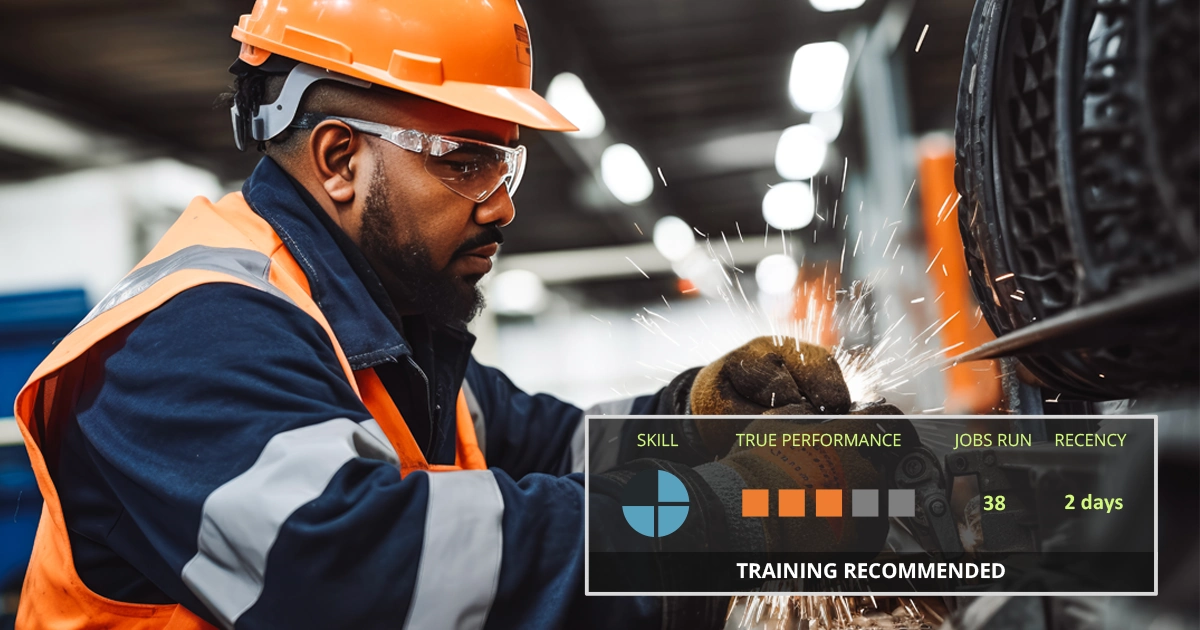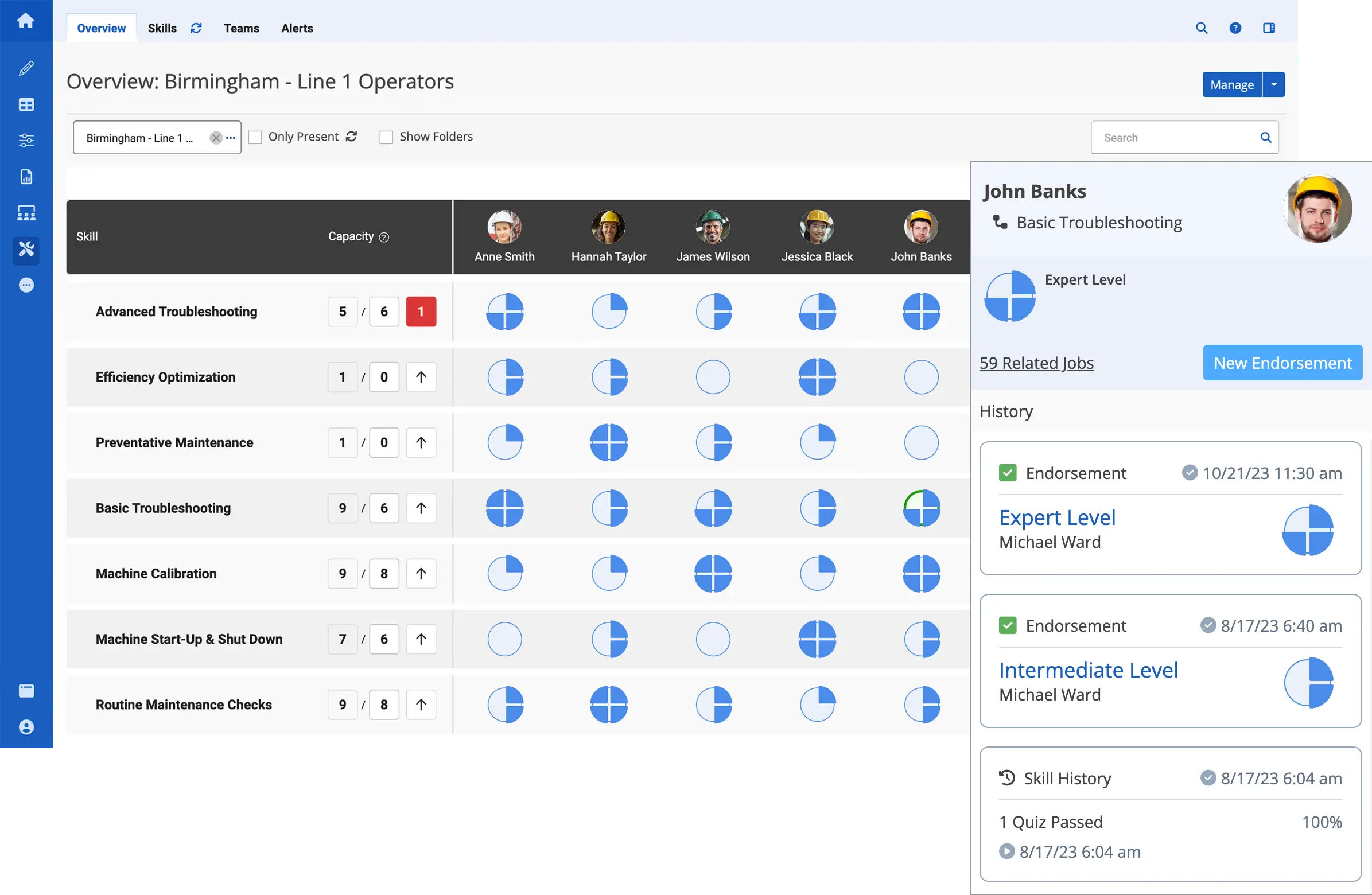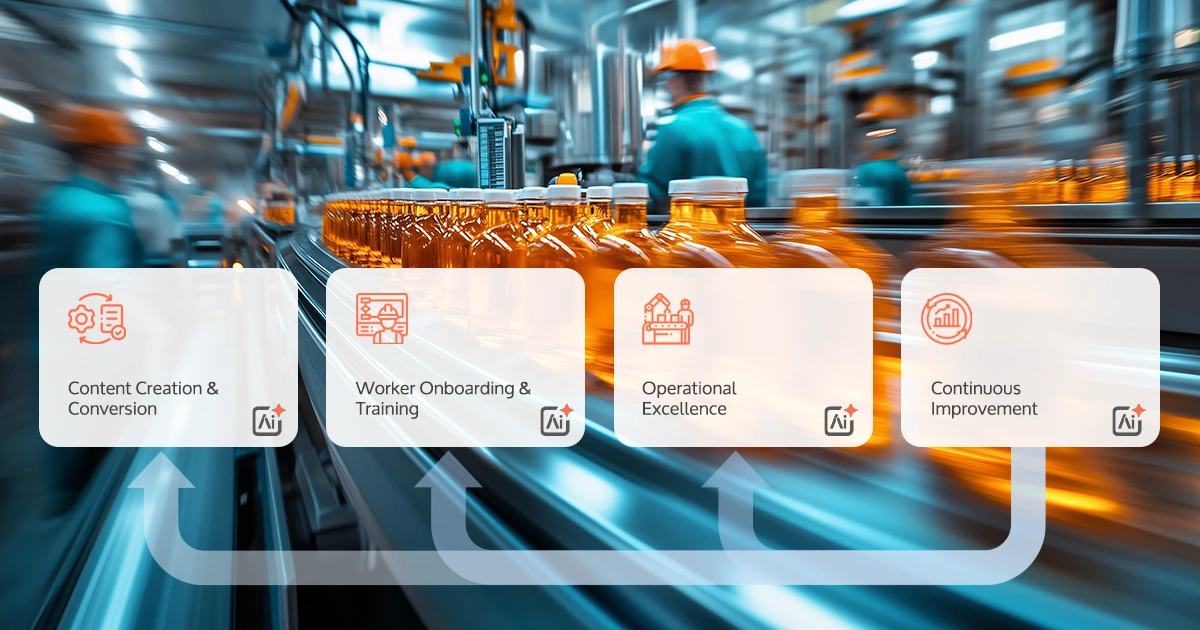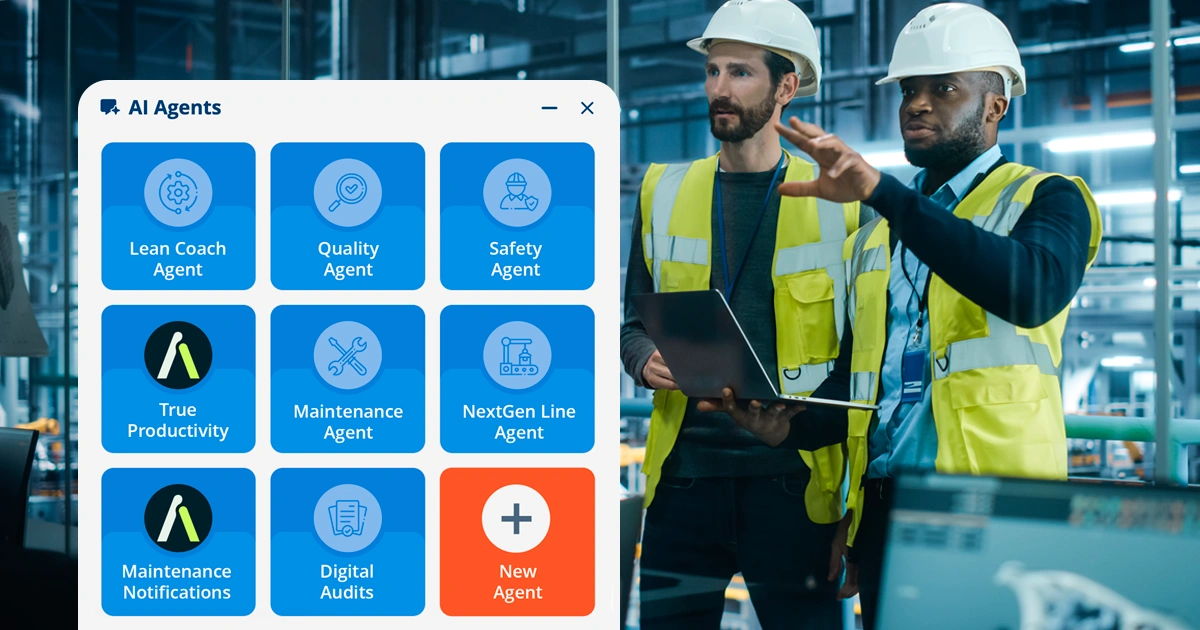Learn about performance management in manufacturing, best practices and implementation methods, and key examples and use cases.
Manufacturing performance management is the process of setting, monitoring, and optimizing key performance indicators (KPIs) related to workforce performance and production processes in manufacturing environments. It includes real-time monitoring and evaluation of employees’ work, as well as the continuous improvement of operational workflows to ensure optimal efficiency, product quality, and adherence to both safety requirements and organizational goals.
Through data-driven insights, performance management software, and regular assessments, performance management aims to enhance employee productivity and engagement, reduce downtime, and maintain a competitive edge in the industry. Read our blog post below to learn more about performance management in manufacturing including:
- 5 Best Practices for Performance Management in Manufacturing
- Key Performance Management Strategies for Manufacturing Leaders
- Simplifying Performance Management with Digital Tools
5 Best Practices for Performance Management in Manufacturing
To get the best value from your performance management system here are five best practices for performance management in manufacturing:
1. Clear Goal Alignment:
Organizations must ensure that performance management processes align with overall organizational goals. They must clearly communicate objectives to employees at all levels, linking individual and team performance metrics to broader manufacturing and business objectives. This fosters a sense of purpose in frontline teams, engages workers, and helps employees understand how their efforts contribute to the company’s success.
2. Real-time Monitoring and Data Analytics:
Implement real-time monitoring of production and shop floor processes and equipment performance through the use of AI and connected worker technology. Utilize data analytics and AI-driven processing to gain insights into worker performance trends, identify bottlenecks, and facilitate data-driven decision-making. The ability to monitor operations in real-time not only enables proactive interventions to maintain efficiency, it also ensures fairness, accuracy, and transparency in performance measurement.
Truly optimized performance management is only possible when the work being done is connected to worker skills and competency training. The best way to do this is with AI-powered connected worker technology that uses AI to deliver insights on workforce development and act on data collected from connected frontline workers.
3. Employee Training and Development Programs:
Prioritize ongoing training and development programs for manufacturing personnel. Equip frontline workers with the necessary skills to adapt to evolving technologies and operational requirements. Use performance management systems and other digital tools like skills matrixes to identify skill gaps, set training goals, and track progress, ensuring a skilled and adaptable workforce.
4. Regular Performance Reviews and Feedback:
Conduct regular performance reviews that provide constructive and timely feedback to employees. Use these reviews as opportunities to recognize achievements, address areas for improvement, and set new performance goals. Foster open communication between managers and employees to encourage continuous improvement.
5. Integration with Continuous Improvement Initiatives:
Integrate performance management systems with “kaizen” or continuous improvement initiatives such as Lean or Six Sigma. Use data from performance metrics to identify opportunities for process optimization, waste reduction, and efficiency improvements. This ensures that performance management is not only evaluative but actively contributes to the ongoing enhancement of manufacturing processes.
Leveraging these best practices contributes to a holistic performance management process that aligns manufacturing organizations and their frontline workforce with strategic goals, optimizes operations, and creates a culture of continuous improvement.
Key Performance Management Strategies for Manufacturing Leaders
The following are a few examples of performance management strategies that manufacturing leaders, plant managers, and shift supervisors should consider when implementing their performance management process.
Line-shift Goals
Manufacturers often use production planning and scheduling systems to manage line shifts effectively and ensure a smooth transition between different production configurations. While line shifts in manufacturing are often necessary for adapting to changing demands, introducing new products, or optimizing efficiency, they can also pose challenges, including downtime, quality control issues, employee fatigue, and planning issues. By establishing clear and measurable objectives for each line shift or individual worker that aligns with organizational goals, production leaders can ensure production goals are met.
Individual Meetings and Communication
Manufacturing leaders should implement a performance management strategy that incorporates 1-1 meetings and communication. Regularly providing constructive feedback to employees on their performance can improve performance and boost employee engagement. Offering coaching and development opportunities to enhance skills and capabilities.
Continuous Training
Continuous training in manufacturing involves enabling workers to learn new skills regularly. It’s a great way to improve employee performance and innovation, as well as engage and retain top talent. A good example of a continuous learning model is everboarding, a modern approach toward employee onboarding and training that shifts away from the traditional “one-and-done” onboarding model and recognizes learning as an ongoing process.
Performance Management Tools
Implementing performance management tools can help automate ongoing employee evaluation, as well as align employee performance with other key manufacturing KPIs, including production quality, machine uptime, and labor utilization. These tools can also be used to identify continuous improvement opportunities. This allows manufacturing leaders to adapt and refine approaches based on feedback and outcomes.
Simplifying Performance Management with Digital Tools
According to Forbes, as the future of work evolves and changes so must performance management, traditional methods may no longer be as successful in an era where the workforce is constantly changing.
Digital tools such as connected worker solutions and AI-driven analytics help simplify performance management systems by streamlining processes, improving efficiency, and providing more accurate insights. Implementing these connected worker solutions automates the collection of performance-related data from various sources including connected frontline workers, IoT devices, software systems, and more. This eliminates the need for manual data entry, reducing errors and ensuring real-time access to up-to-date information.
By digitizing the performance management process, organizations create a centralized platform for storing and managing performance-related data. This centralized knowledge base makes it easy for managers and employees to access relevant information, track progress, and collaborate on performance goals. Furthermore, AI-driven connected worker solutions allow for digital performance tracking, customized training and skills development planning, workflow optimization, and improved predictive maintenance.
Through these digital tools and technology, manufacturing companies can simplify performance management processes, improve operational efficiency, and adapt to the demands of a rapidly evolving industry while fostering a culture of continuous improvement and development for their manufacturing workforce.
Augmentir is the world’s leading connected worker solution, combining smart connected worker and AI technologies to drive continuous improvement and enhance performance management initiatives in manufacturing.
Augmentir is trusted by manufacturing leaders as a digital transformation partner improving training and development, workforce allocation, and operational excellence through our AI-driven True Productivity™ and True Performance™ offerings, as well as digitizing and optimizing complex workflows, skills tracking, and more through our patented smart, connected worker suite. Schedule a live demo today to learn more.





